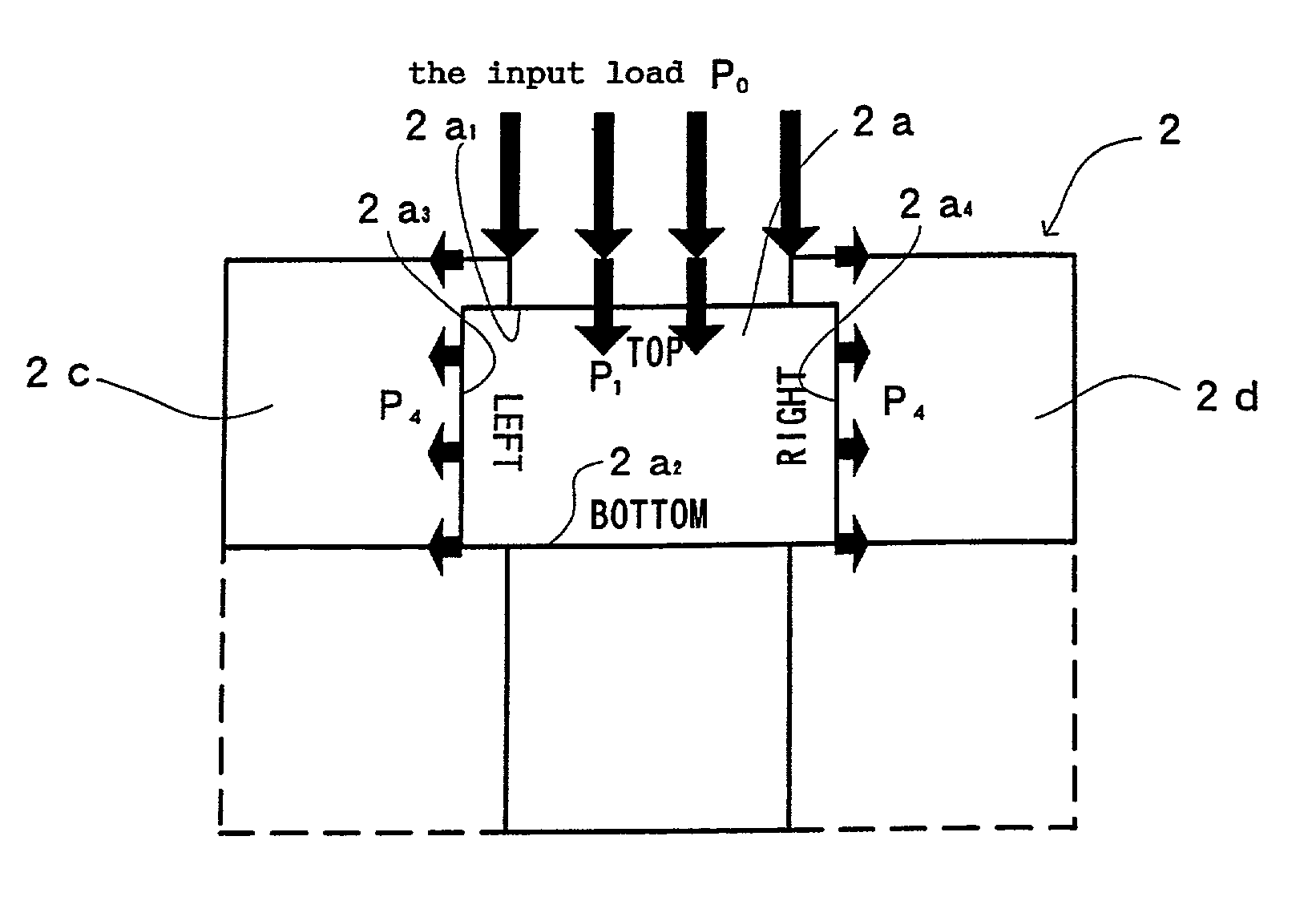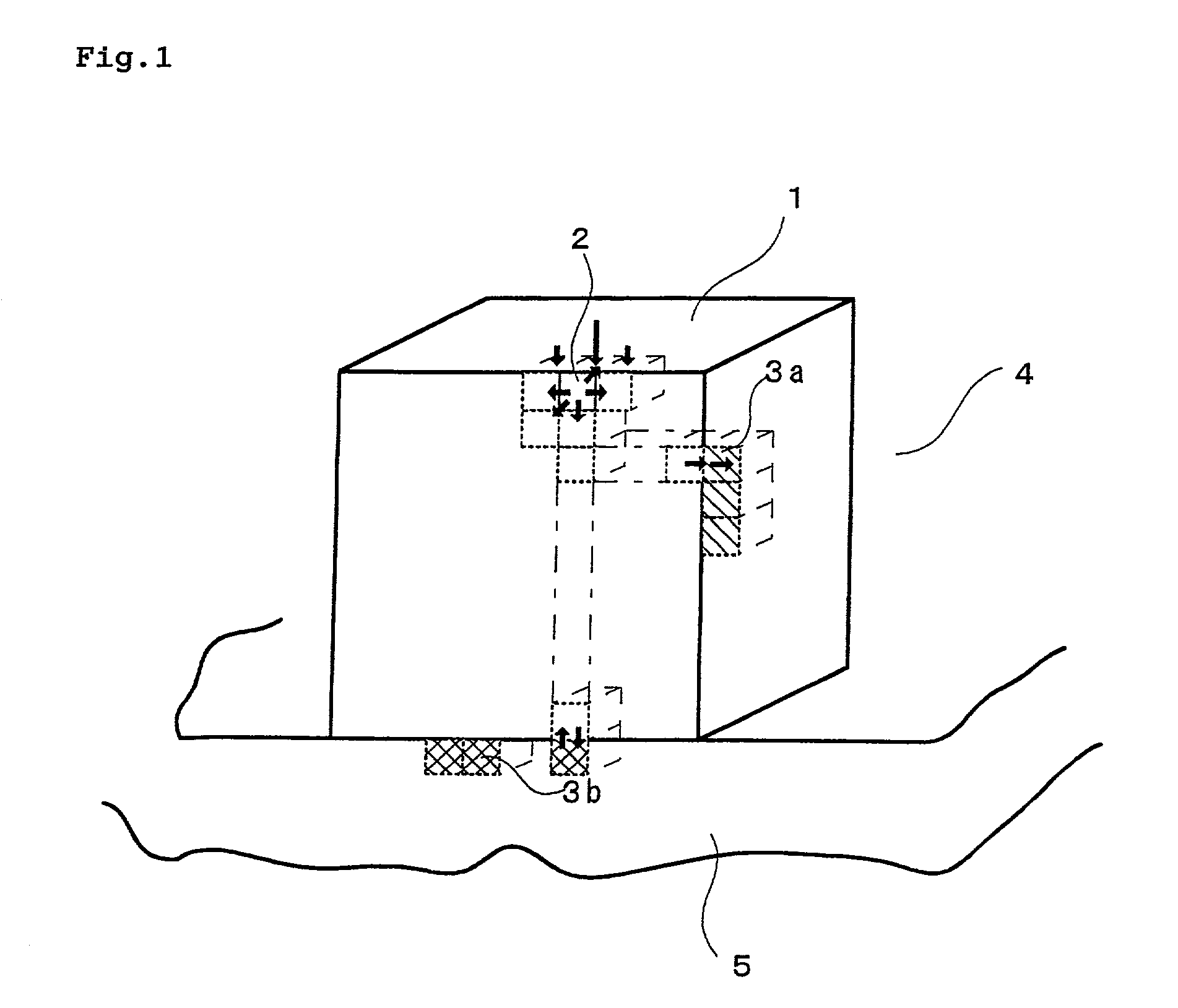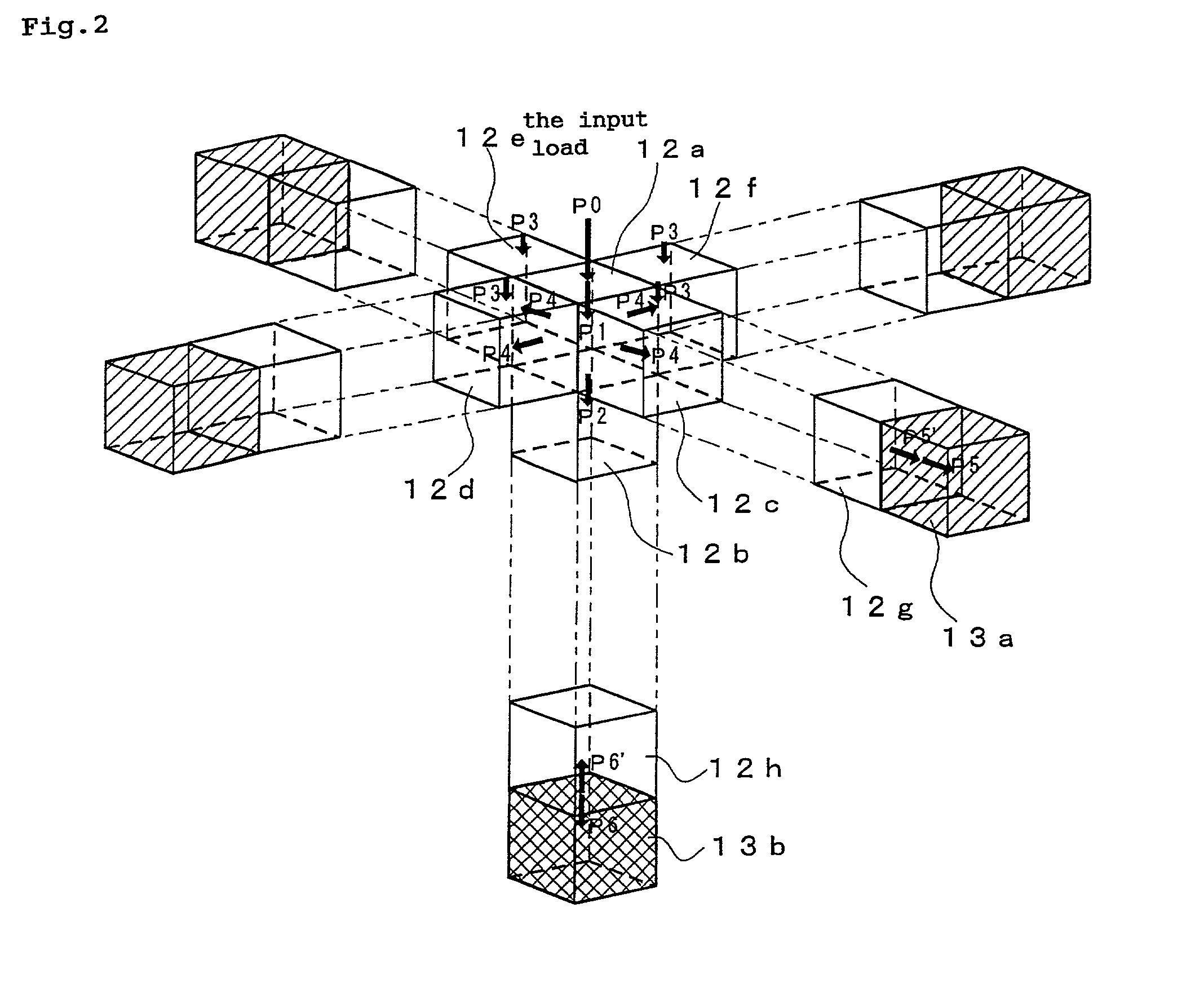Calculation method for physical body deformation under load propagation
- Summary
- Abstract
- Description
- Claims
- Application Information
AI Technical Summary
Problems solved by technology
Method used
Image
Examples
second embodiment
[0076]Although until here, an explanation has been given two-dimensionally of the material agent 2 and the boundary agent 3, next, as a second embodiment, an explanation will be given three-dimensionally of the material agent 2 and the boundary agent 3 as a method of displaying motion of the physical body according to the present invention.
[0077]FIG. 2, mentioned above, is a load propagation operation view of a three-dimensional object physical body (agent) according to the embodiment and notation 12 assumes a material agent and notation 13 assumes a boundary agent.
[0078]For example, when the input load P0 is exerted to a predetermined position of the material agent 12, according to the embodiment, for example, a material agent 12a of a cube is formed, when the material agent 12a is formed, based on the predetermined transmission coefficient α1, the load P1 in the direction the same as that of the input load P0 is transmitted, successively, at a bottom face of the material agent 12a...
first embodiment
[0079]Further, when the material agent 12a is formed, in a direction the same as the direction of exerting the input load P0, that is, at four side faces of the material agent 12a, friction forces are exerted, similar to the above-described first embodiment, based on the predetermined transmission coefficient α3, the load P3 in the direction the same as that of the input load P0 is transmitted and there are respectively formed material agents 12c, 12d, 12e and 12f having a shape the same as that of the material agent 12a.
[0080]That is, in FIG. 2, at a front side face on the right side of the material agent 12a, the material agent 12c is formed, at a front side face on the left side of the material agent 12a, the material agent 12d is formed, at a rear side face on the LEFT edge side, the material agent 12e is formed and at a rear side face on the right side, the material agent 12f is formed, respectively.
[0081]Further, similar to the above-described formation of agents and load tra...
PUM
 Login to View More
Login to View More Abstract
Description
Claims
Application Information
 Login to View More
Login to View More - R&D
- Intellectual Property
- Life Sciences
- Materials
- Tech Scout
- Unparalleled Data Quality
- Higher Quality Content
- 60% Fewer Hallucinations
Browse by: Latest US Patents, China's latest patents, Technical Efficacy Thesaurus, Application Domain, Technology Topic, Popular Technical Reports.
© 2025 PatSnap. All rights reserved.Legal|Privacy policy|Modern Slavery Act Transparency Statement|Sitemap|About US| Contact US: help@patsnap.com



